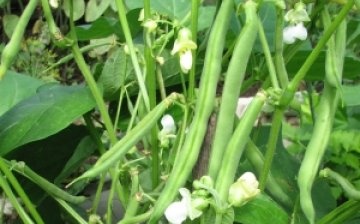Growing asparagus beans
Asparagus beans are not often grown by gardeners in our country, and yet it is a very tasty and dietary product. Unlike ordinary beans, it uses both seeds and shoulder blades with pulp filling them. They are harvested when the seeds are still the size of a grain of wheat. Growing asparagus beans differs little from the cultivation of ordinary beans and will be within the power of even a novice gardener. It should also be noted that there is a climbing species and bush species. The fruits of curly beans are not used for food; they have a purely decorative value.
Asparagus beans produce good yields on nutritious, loose, non-acidic soil. The site should be sunny and protected from cold winds. Every year this plant is planted in a new place, otherwise the likelihood of atracnosis is high. The seeds are sown directly into the ground when the soil warms up and the threat of frost has passed, and they are sprinkled with humus. The distance between seeds should be at least 10 centimeters. During the growing season, plants are fed several times with mineral fertilizers, it is especially important to do this during budding.
Growing asparagus beans requires regular watering, weeding and loosening of row spacings. Plants bloom in 40 days after germination, and the fruits will appear in another 20 days. The crop must be collected selectively, choosing fruits that have reached milk ripeness and did not have time to harden. Regular collection of fruits stimulates the formation of new ovaries. The plant will bear fruit until the frost.



